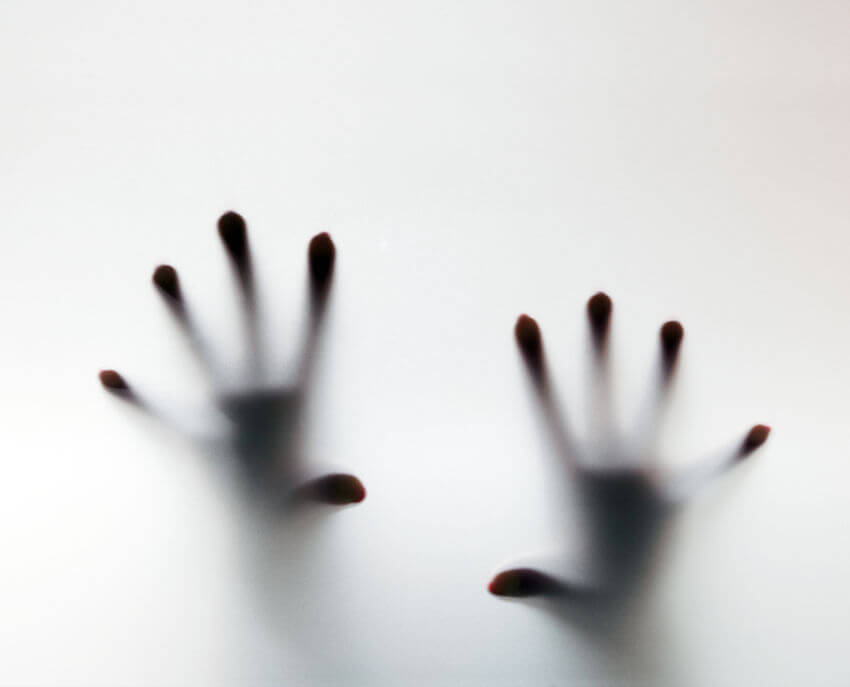Panic attacks are sudden feelings of fear or intense discomfort that cause such anxiety that the person who suffers from fear fears losing control, thinks that they will not be able to get out of it or that they will die, even if these attacks are not life-threatening.
Panic attacks occur without warning and can even wake a person from deep sleep, their duration varies, but it can be between 10 and 20 minutes, if you’ve ever been through this, you know it’s not pleasant.
- It is estimated that a third of people have suffered or will suffer a panic attack at some point in their lives.
- Usually between the age of 15 and 19.
- Among people with symptoms of panic attacks.
- Less than 3% will develop panic syndrome.
Then we will see how to control panic attacks, but first it is interesting to analyze exactly what these attacks are like and, more specifically, what their symptoms are.
A panic attack will have at least four of the following symptoms
There’s no pattern of panic attacks. Some people may try several times a day and go months without repetition, while others may have this type of attack even once a week.
Because panic attacks can involve other health problems, anyone with these symptoms needs to be evaluated by a professional to determine if there is an underlying medical cause. Some heart problems, respiratory diseases, hormonal irregularities, as well as stimulants such as caffeine. , can cause symptoms similar to panic attacks.
A panic attack occurs when something triggers fear, also known as the combat and flight system. The body’s nervous system releases adrenaline, hormones and adrenaline causes disturbing feelings and sensations.
When the nervous system reacts normally to a scary situation, once eliminated, the adrenaline levels adapt quickly and return to normal levels, this does not happen with a panic attack and sometimes it takes a person to fully recover from symptoms.
Often, there is no obvious reason for panic symptoms, leading the brain to try to explain or justify the attack with irrational thoughts such as: “Should I die?Or “Am I losing my mind?” A panic attack can also be caused by an event such as public speaking or stealing.
The part of the brain called amygdala is directly involved in panic attacks and anxiety disorders, this brain structure reacts with a high voltage response when exposed to an unknown situation or after facing a stressful life event.
It is not known what triggers panic attacks, but research indicates that a combination of genetic, biological, psychological and environmental factors can increase a person’s likelihood of panicking.
After appropriate medical and psychological examinations exclude any underlying conditions associated with panic attack symptoms, they can be monitored in different ways:
Knowledge is essential to control the symptoms of a panic attack. Learning how fear works in the brain can help people recognize a panic attack for what it is: a failure to trigger the amygdala that causes an adrenaline rush.
It is essential to understand that panic symptoms are not associated with a serious illness. Despite the terrible symptoms of panic, it should be remembered that a panic attack will not lead to death.
Our instinct is to breathe faster when panic arises. Taking control of breathing is the first step in controlling a panic attack. The goal is to allow little air to enter and out, avoiding hyperventilation and excess carbon dioxide.
To do this, it is necessary to slowly inhale through the nose and exhale through the mouth with the lips slightly open, after retaining air in the lungs for a few seconds, after several cycles, the tranquility will begin to return.
Another useful strategy is to learn how to relax the body, one way is to stretch several muscles and then relax them, in this way we help reduce overall tension and stress levels.
A good way to get started is with your feet. You need to contract the muscle group while breathing deeply, hold on for a second, and then release the air while releasing the muscles.
Mindfulness, called mindfulness, is a way to live the present moment and accept thoughts as they are, but without letting them absorb us, panic attacks can come from spiral thoughts, or even from concerns of catastrophic events.
Regular exercise is necessary to maintain good health and should be part of daily life. Exercise helps relieve stress and prompts the body to produce natural chemicals (endorphins) that are essential for relieving pain and a sense of well-being.
If you already know that there are certain situations that scare you or remind you of previous panic situations, breathe easy and try to relax, another option is to look for distractions to try not to think about it, besides, if you already know this you can happen, be prepared.
For example, use several layers of clothing to relieve yourself a little when you’re hot, or find a way to cool the mood, another option is to bring water with you to stay hydrated, plus drinking water reassures you for a while. simple reason: the brain receives the message that there is no danger because, if there was, you would not have stopped drinking water.
Eating healthy and regularly helps maintain normal blood sugar levels, thus avoiding spikes, so you never spend more than four hours without eating, you should also try to correct nutritional deficiencies in your diet and avoid caffeine and alcohol, as these substances can trigger or aggravate panic attacks.

